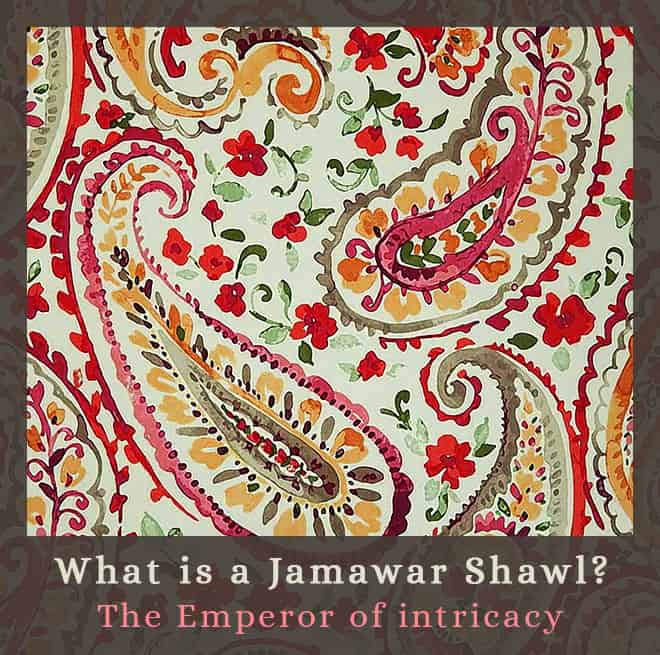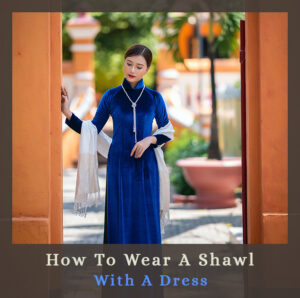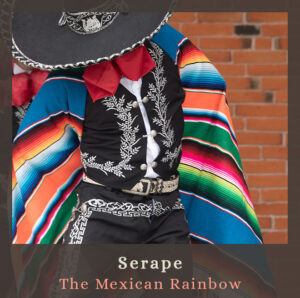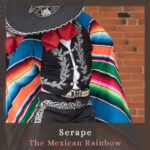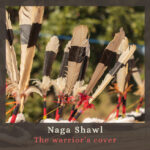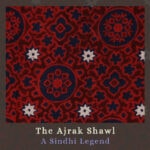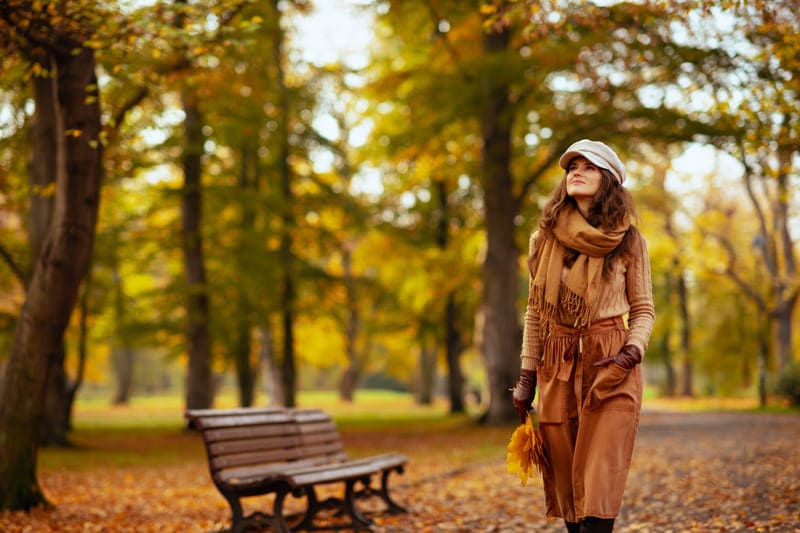Jamawar shawl is a traditional garment made from a fabric called Jamawar (or Jamavar), which originates from Kashmir, India. It is made mainly from the finest cashmere wool called Pashmina, sometimes blended with silk to give it a smooth softness and sometimes with silk or cotton threads in rich colors for the embellishments woven into it.
In the past, people would buy a Jamawar fabric by the yard to protect themselves from chilly winters. That explains the name; Jama means a ‘robe’ or ‘shawl’ in urdu, and War means ‘Yard’ (the measuring unit).
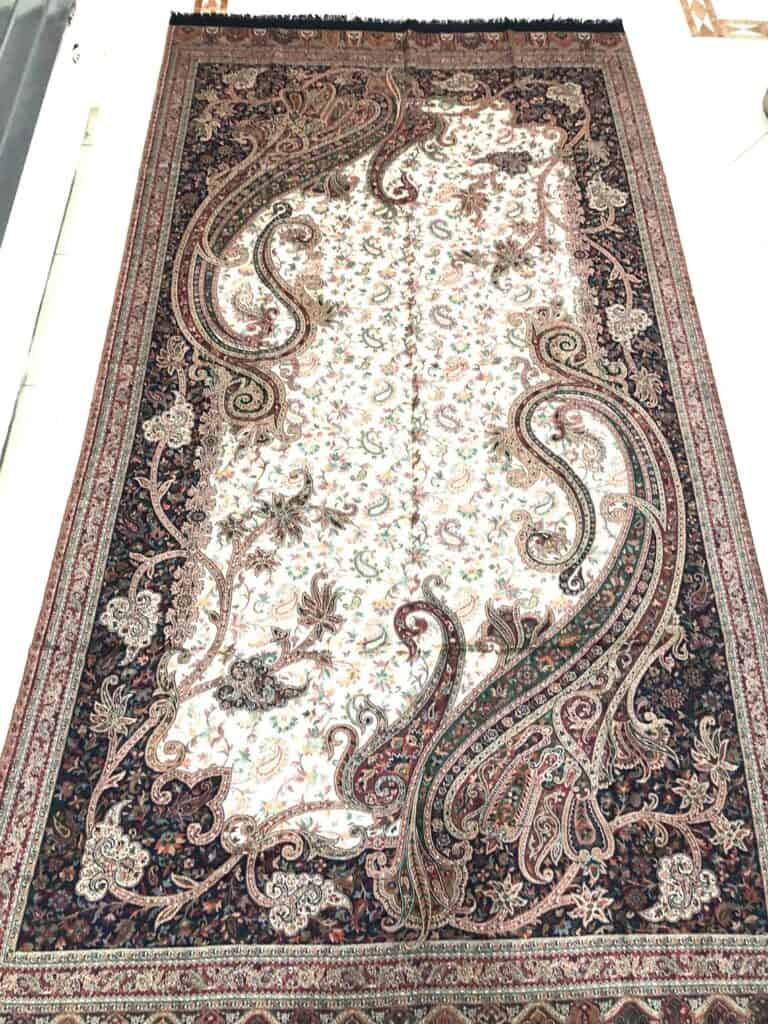
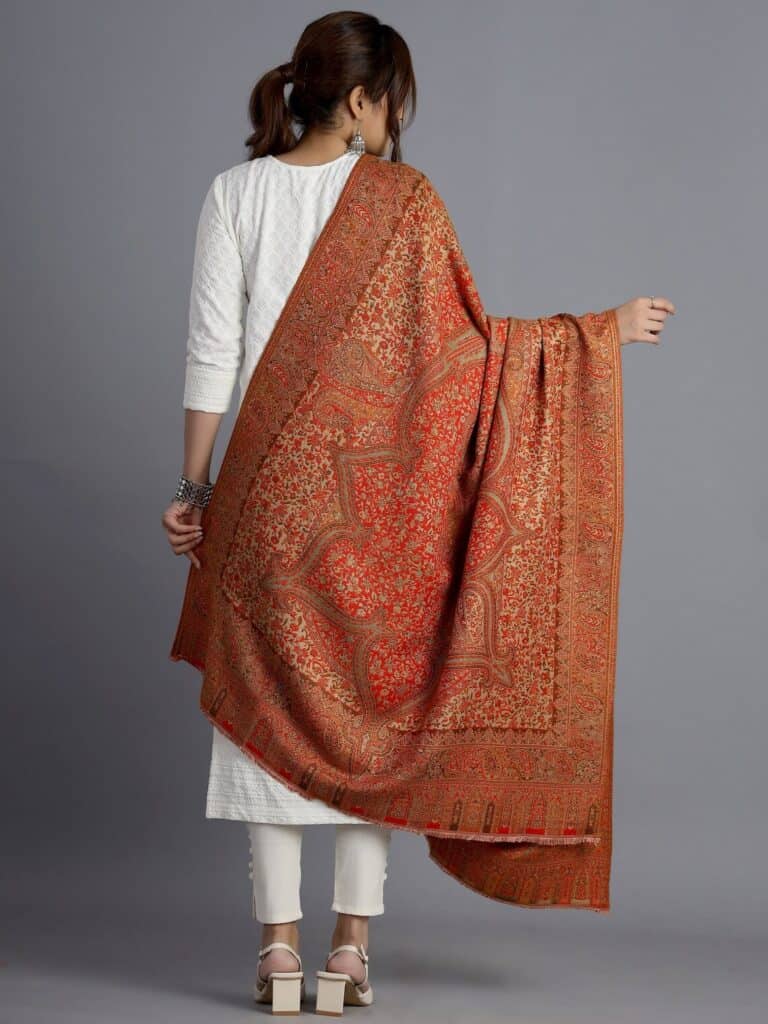
Vintage Jamawar shawl by Magicstargems (Etsy)
Reversible Floral Paisley Jamawar Shawl by Ravaiyaa (Etsy)
What are the Jamawar shawls famous for?
These shawls are known for their unique blend of many hues and colors (it can get to 250!), which gives them a unique appearance.
The embroidered parts are traditionally woven with colorful silk threads using hand needles to make detailed patterns.
These shawls were first made especially for the Mughal King and his family only, and completing a single shawl could take years!
The beautifully intricate designs and the warmth it offers make the Jamawar shawl an exquisite piece of art and a practical and functional accessory.
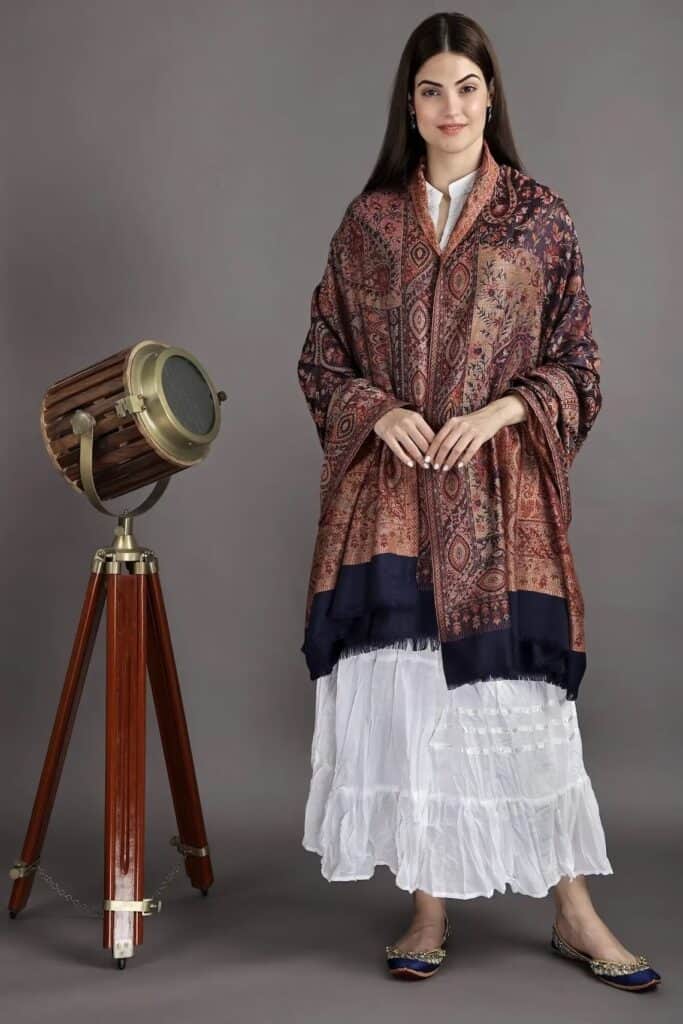
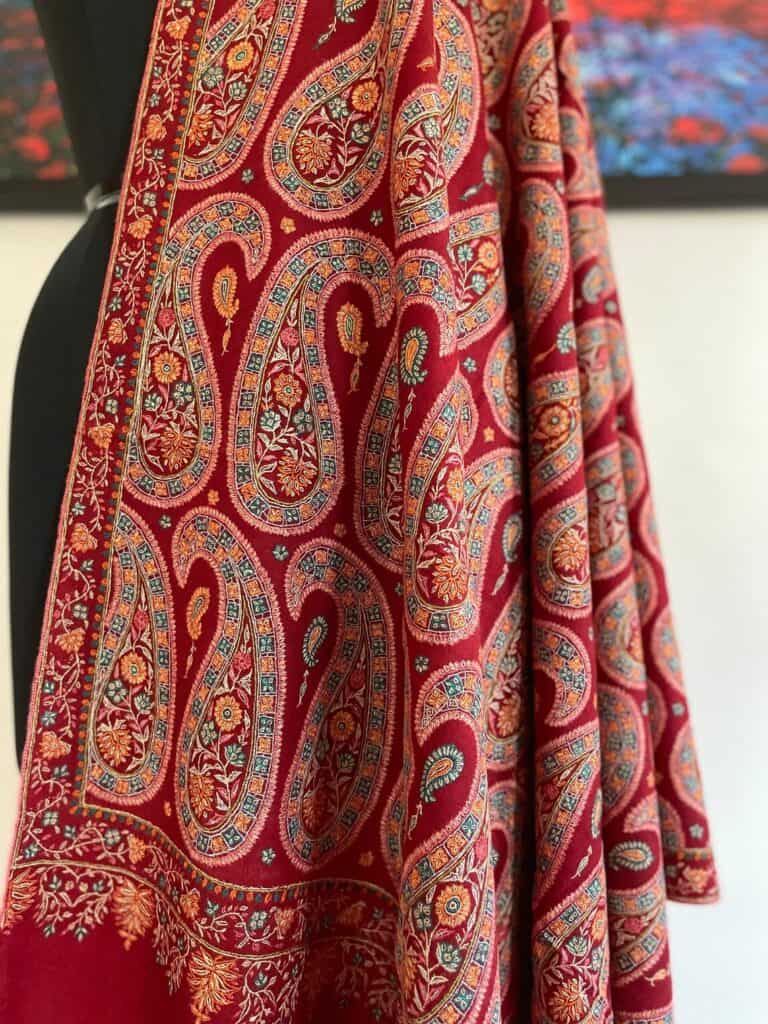
Reversible Jamawar Shawl with Woven Paisleys by Gokalarts (Etsy)
Very soft Jamawar Shawl by Nayakarts (Etsy)
OK, but what is so special about Jamawar shawls?
One look at a real Jamawar shawl, and this question will fade by itself. You will immediately notice what is sooo special about it!
The rich colors, fascinating intricate designs with paisley patterns (also called: kairy or boteh) as their most common motif, and their luxurious look make these shawls so unique. They are woven by the highest skilled artists, which weave them with the most refined appearance with no loose threads on the backside.
As mentioned, they were initially handwoven from the finest wool, sometimes with silk, taking years or even a decade to complete (Could you imagine that?!), making them highly precious, extremely expensive, and an accessory that only the royals and aristocrats could afford.
Nowadays, with the help of advanced technology and faster looms, Jamawar shawls have become more accessible to a wider audience.
Efforts are also being made to revive and innovate the art form, ensuring its continued relevance and popularity in India and worldwide.
Although shawls are their most famous form, you can also find the beauty of the Jamavar fabric in sarees, blouses, bedspreads, tablecloths, and curtains.
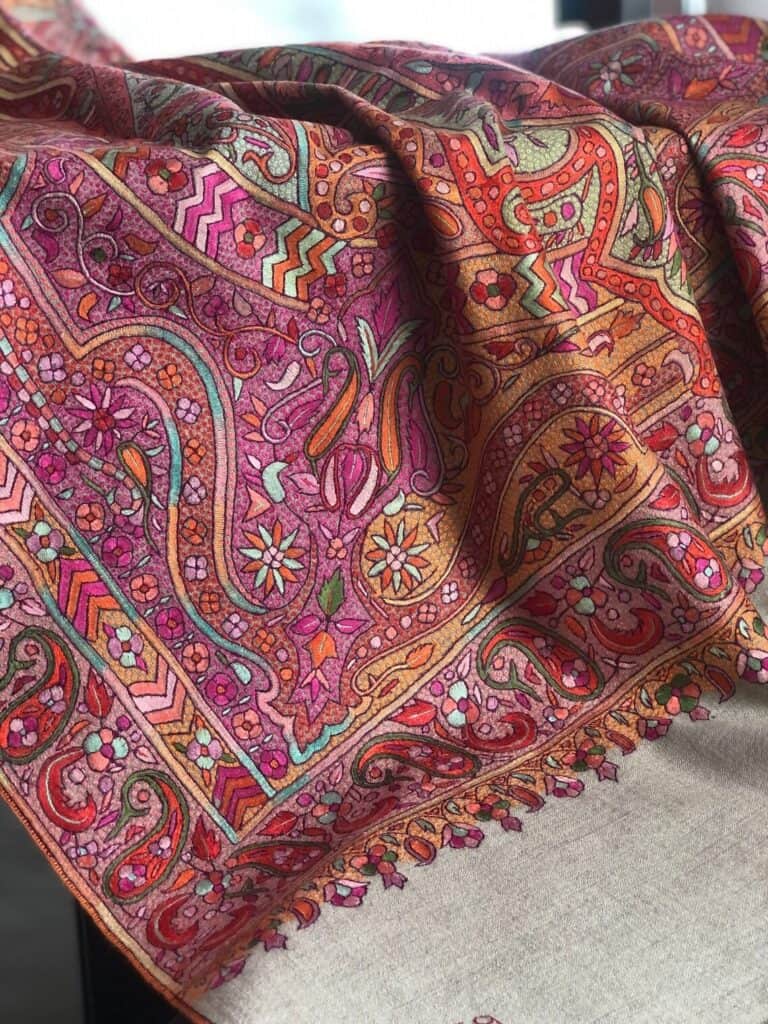
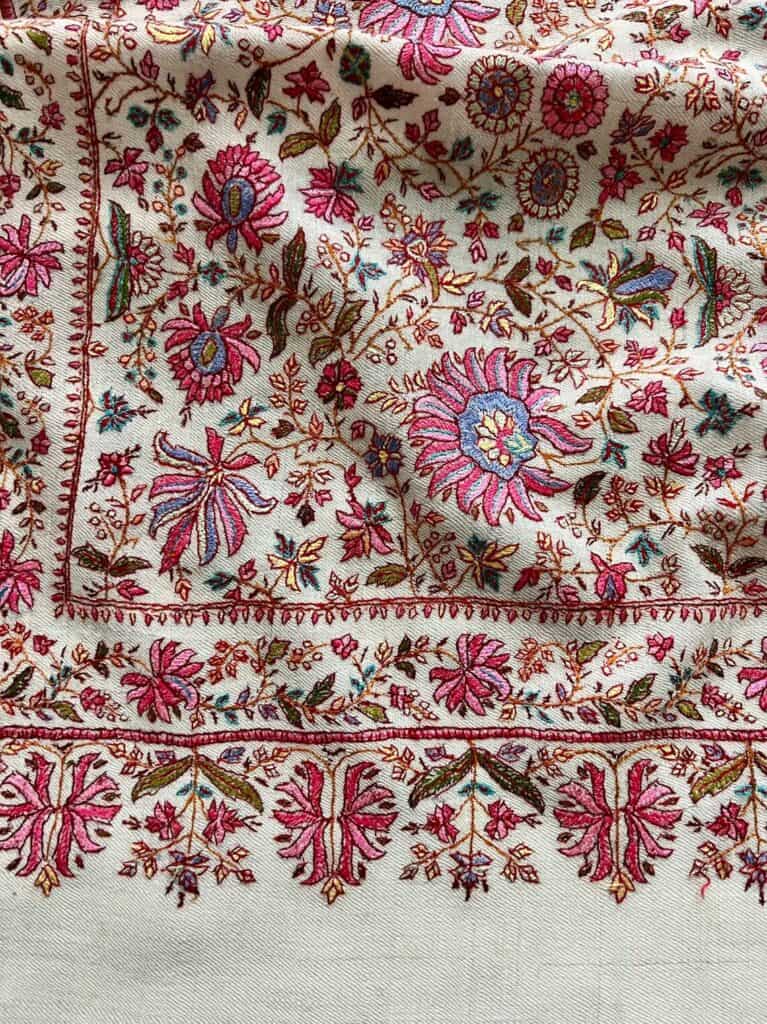
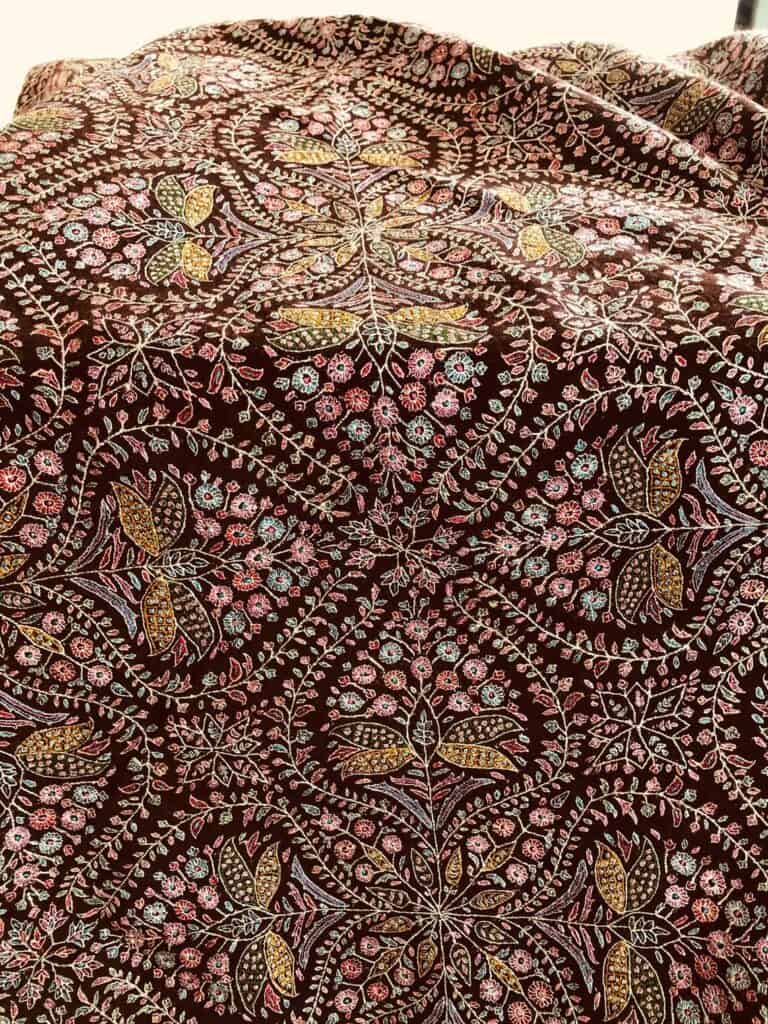
Left to Right:
Exclusive Pashmina Shawl w. Sozni Jamawar Embroidery & Antique Almond Designs
Exclusive Silk Sozni Jamawar Embroidery Pashmina Shawl w. Antique Floral Design
Exclusive Silk Sozni Jamawar Embroidery Pashmina Shawl w. Antique Mandala Design
The History of Jamawar Shawls
The history of the Jamawar shawl can be traced back to its origins in Persia (Iran), from where it traveled to Kashmir and eventually reached the Indian subcontinent around five centuries ago. The luxurious fabric flourished during the Mughal reign, particularly under the patronage of Mughal Emperor Akbar, who was enthusiastic about the precious artistic work and fabrics and helped popularize it in India.
The early 19th century witnessed significant innovations in weaving, the Jacquard loom was invented, and you could make detailed embroidery work and flawless weaves much easier and faster. This made the Jamawar shawl much more affordable.
Despite these advancements, the art of Jamawar weaving began to decline by the end of the 19th century as the patronage of the Mughals diminished.
But fortunately, the beauty of these shawls is eternal. The Indian government made an effort to revive the traditional textile industries of India. This, together with the increasing demand for amazing ethnic textiles, led to a revival of the Jamawar fabric industry.
Today, you can find Jamawar shawls in all qualities, magnificent designs, and a wide range of prices.
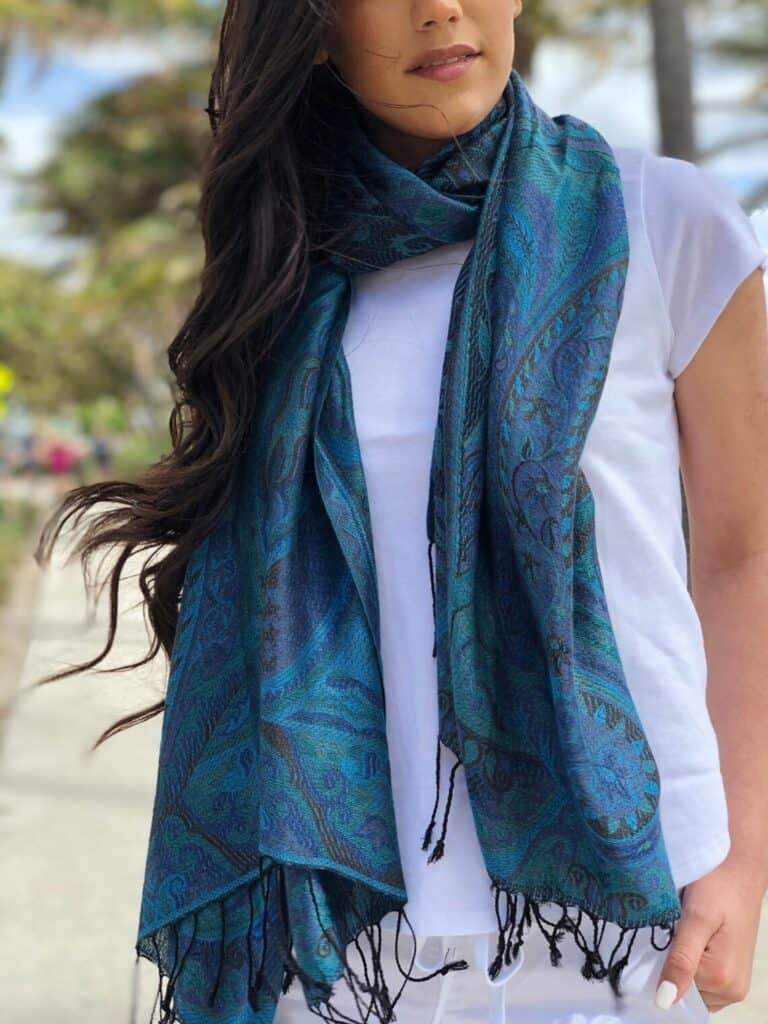
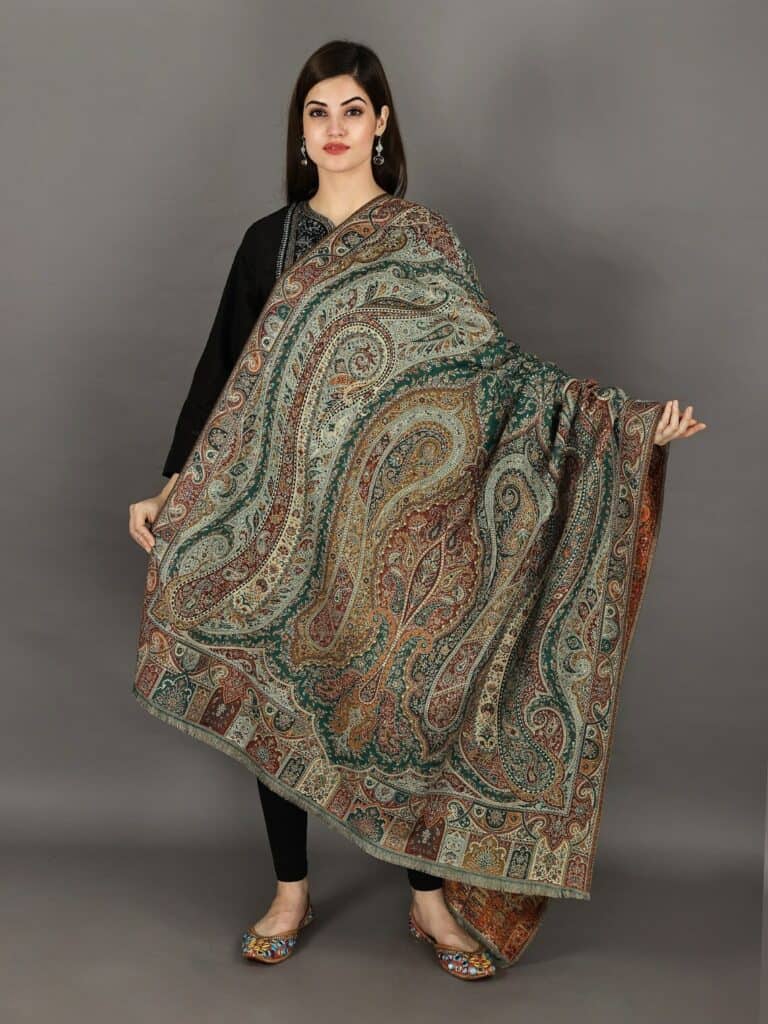
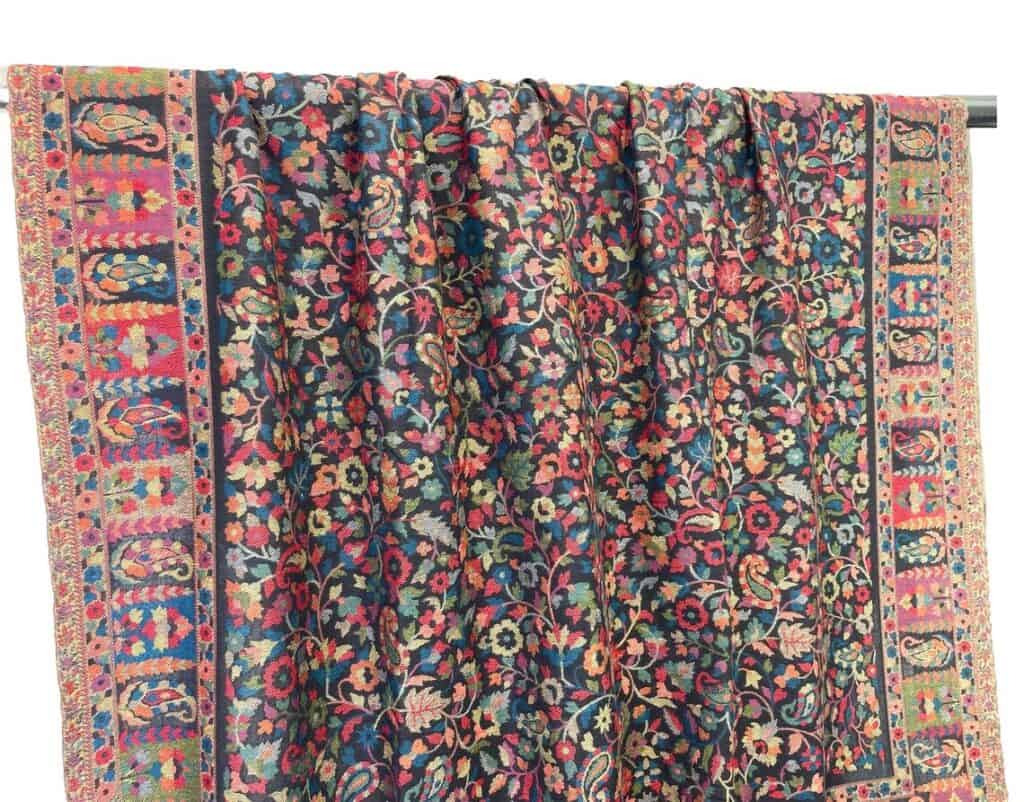
Modal Silk Jamawar Shawl by ScarfAndaBag (Etsy)
Proud-Peacock Woolen Jamawar Shawl w. Woven Paisley & Flower Motif by Gokalarts (Etsy)
Black Floral Jamawar Shawl by burlapandjeans (Etsy)
Is The Jamawar Shawl Warm?
The original Jamawar shawls were made to provide warmth. The eastern ancestors would buy a piece of the Jamawar fabric as a cover to protect themselves from the chilly winters in the high altitudes of the Himalayas.
The Jamawar shawls are usually made of warm Pashmina wool, which provides amazing insulation and retains heat.
What is the size of the Jamawar shawl?
Since the Jamawar was so exclusive in ancient times, only those who could afford it purchased it. So, in many cases, the shawl was specially ordered for someone. That made the size of the Jamawar vary.
Today the size of the shawls also varies, depending on the intended use and manufacturer. Still, our research shows that the common measurements for Jamawar shawls are:
Length: 80 to 110 inches (200 to 280 cm)
Width: 40 to 50 inches (100 to 125 cm)
This is quite a generous size that provides excellent coverage and warmth. It allows the shawl to be draped gracefully over the shoulders or wrapped around the body in various styles.
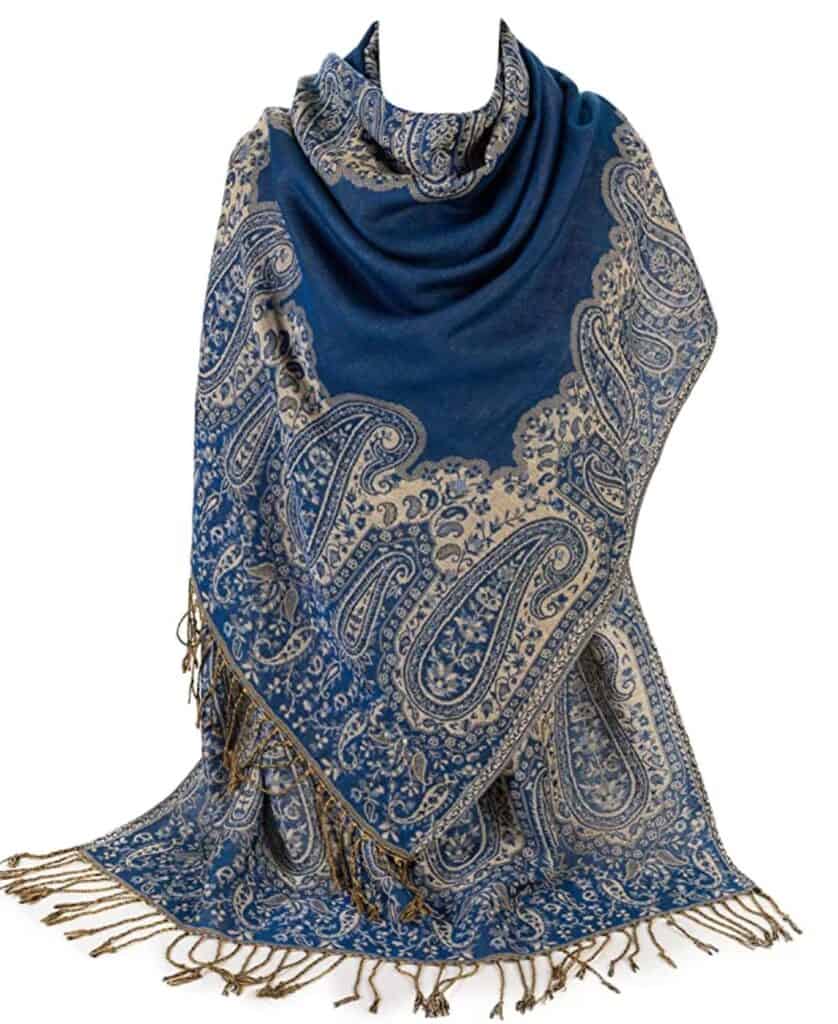
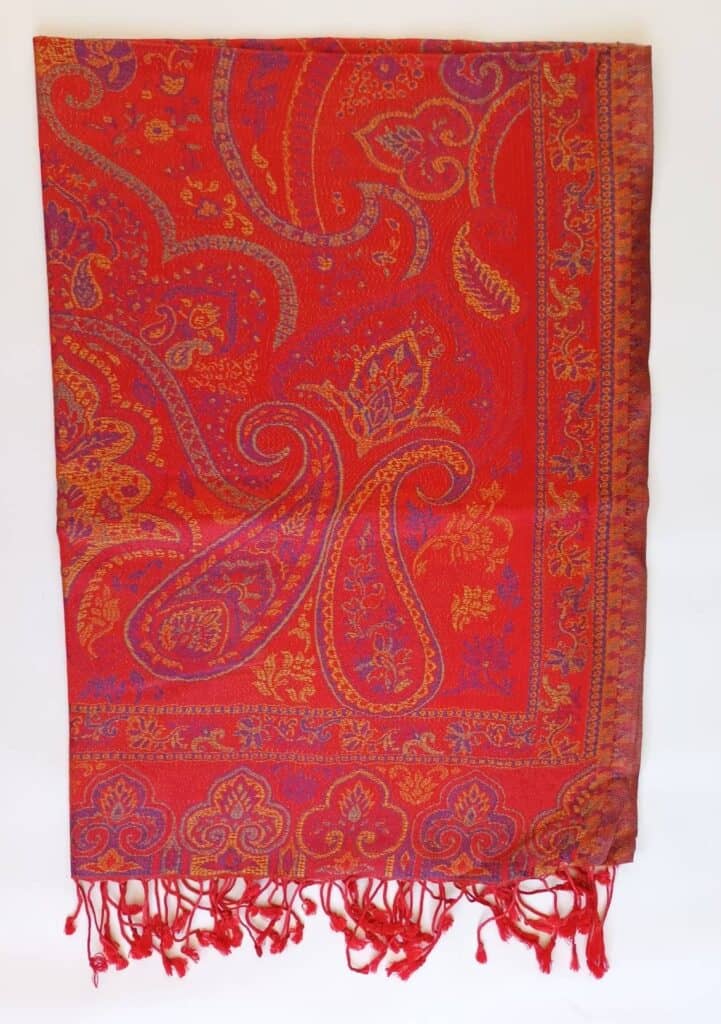
Ladies Paisley Bordered Pashmina Feel Shawl by LondonShawlsBoutique (Etsy)
Red Orange Silk Jamawar Shawl by SilksOfKashmir (Etsy)
What is the difference between Pashmina and Jamawar?
Actually, the best quality Jamawar shawls are made with Pashmina.
Pashmina is a type of fine cashmere wool obtained from the undercoat of the Capra Hircus goat, native to the Himalayas. Pashmina wool is known for its exceptional softness, warmth, and lightweight nature, and all shawls produced from this fine wool are called Pashmina shawls.
Jamawar is one specific type of Pashmina shawl. When a shawl is called Jamawar, it is more about the design of the shawl. The traditional Jamawar shawls were made by skilled craftsmen to produce comprehensive patterns, mainly paisley motifs woven into the fabric.
This is why you can find yourself a beautiful Jamawar Pashmina Shawl.
Is Jamawar and Brocade same?
Though Jamawar and brocade are both luxurious fabrics known for their intricate designs and patterns, they are not the same.
The difference is in the weaving technique of the patterns into the fabric, their origin, and the material composition.
Jamawar originates from Kashmir and is made of Pashmina wool with silk or cotton. It is characterized by its unique blend of colors and hues with paisley motifs, which are completely woven with the primary weft itself, creating an inlaid look.
Brocade, on the other hand, origins from China and is a woven fabric having a raised floral or figured design that uses supplementary warp or weft to create the motifs during the weaving process. The design, appearing only on the fabric face, is usually made in a satin or twill weave.
Brocade is commonly used for upholstery, draperies, and high-end clothing, such as evening gowns and ceremonial attire.
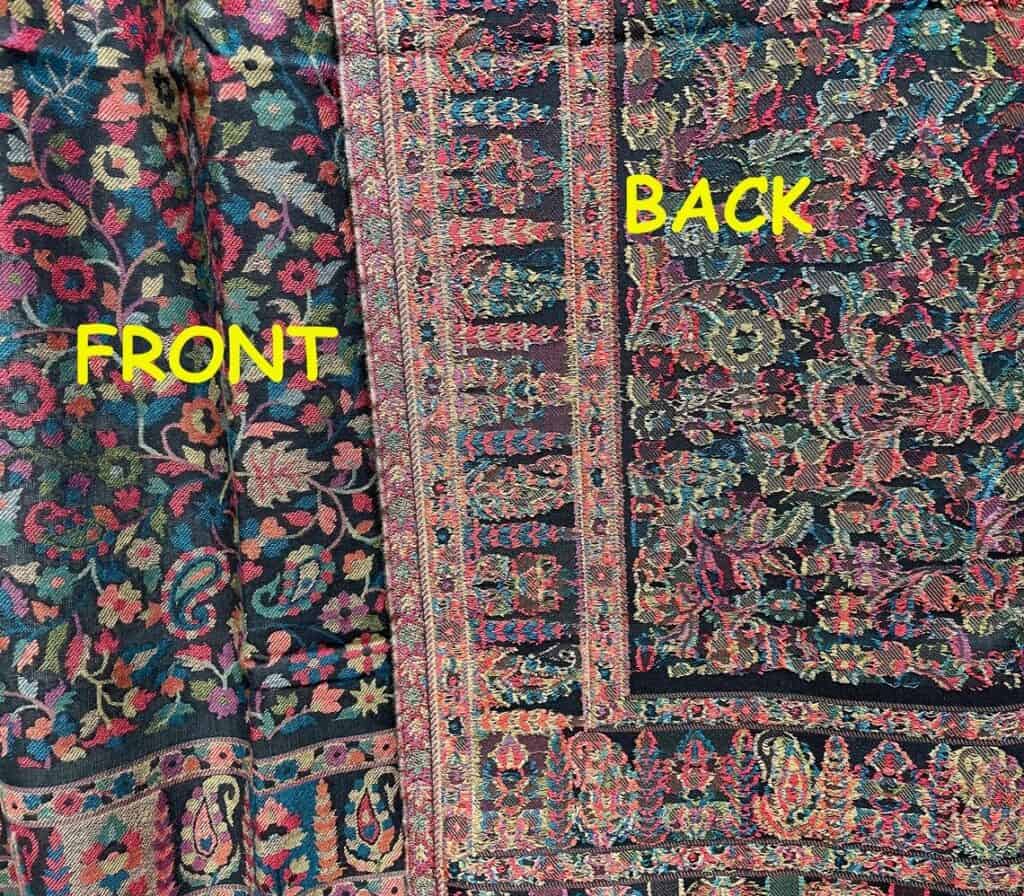
What is the difference between Tanchoi and Jamawar?
These two types of fabrics have a lot in common. They are both known for their luxurious and intricate design but differ in color, material, and origin.
Here are the differences:
Color
The main difference is that the beautiful patterns on the Jamawar fabric have more than one color; as already mentioned, it is known for its unique blends of colors, and Tanchoi’s patterns are made mostly using one color or one primary color for the intricate motif it features and a maximum of 5 colors.
Material
Tanchoi is made of silk yarns, and the traditional Jamawar is made of Pashmina wool with a blend of silk or cotton.
Origin
It is known that the origin of the Tanchoi is China, and later it became popular in India, particularly in Varanasi, while the origin of the Jamawar fabric takes us to Persia before evolving in Kashmir.
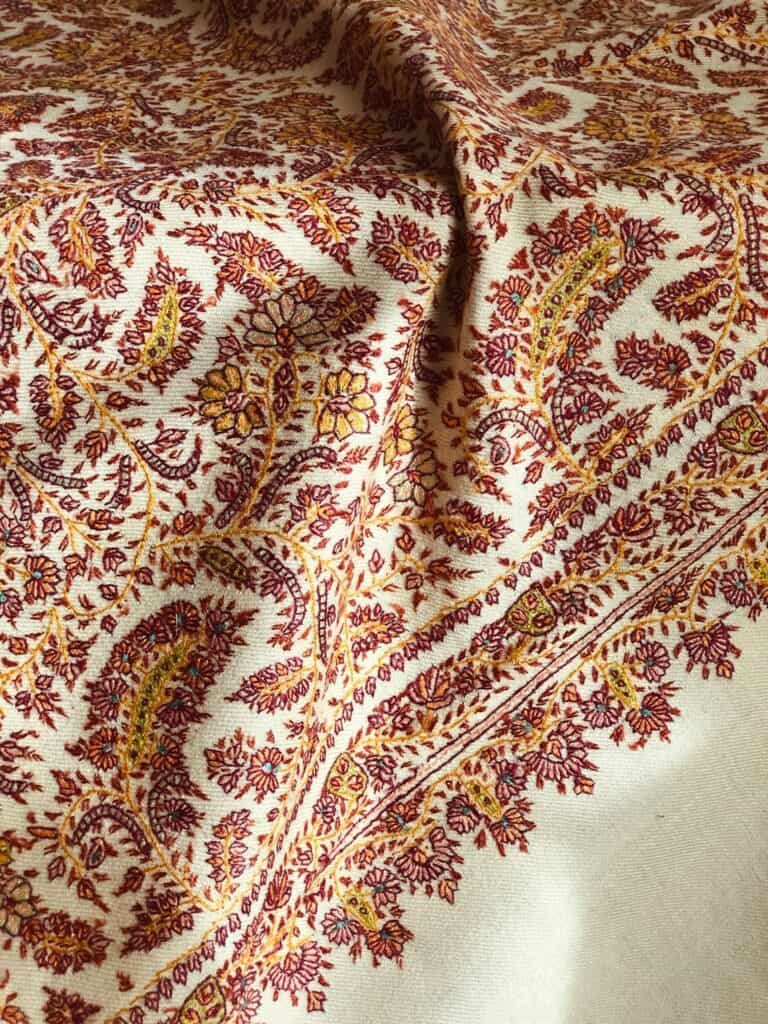
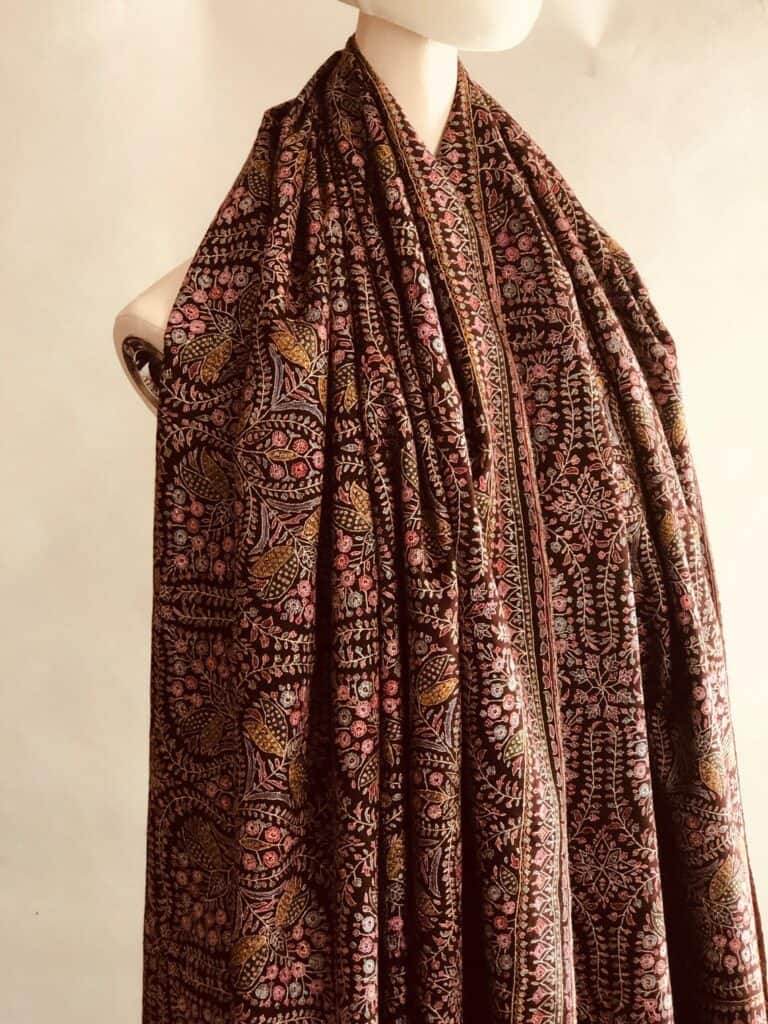
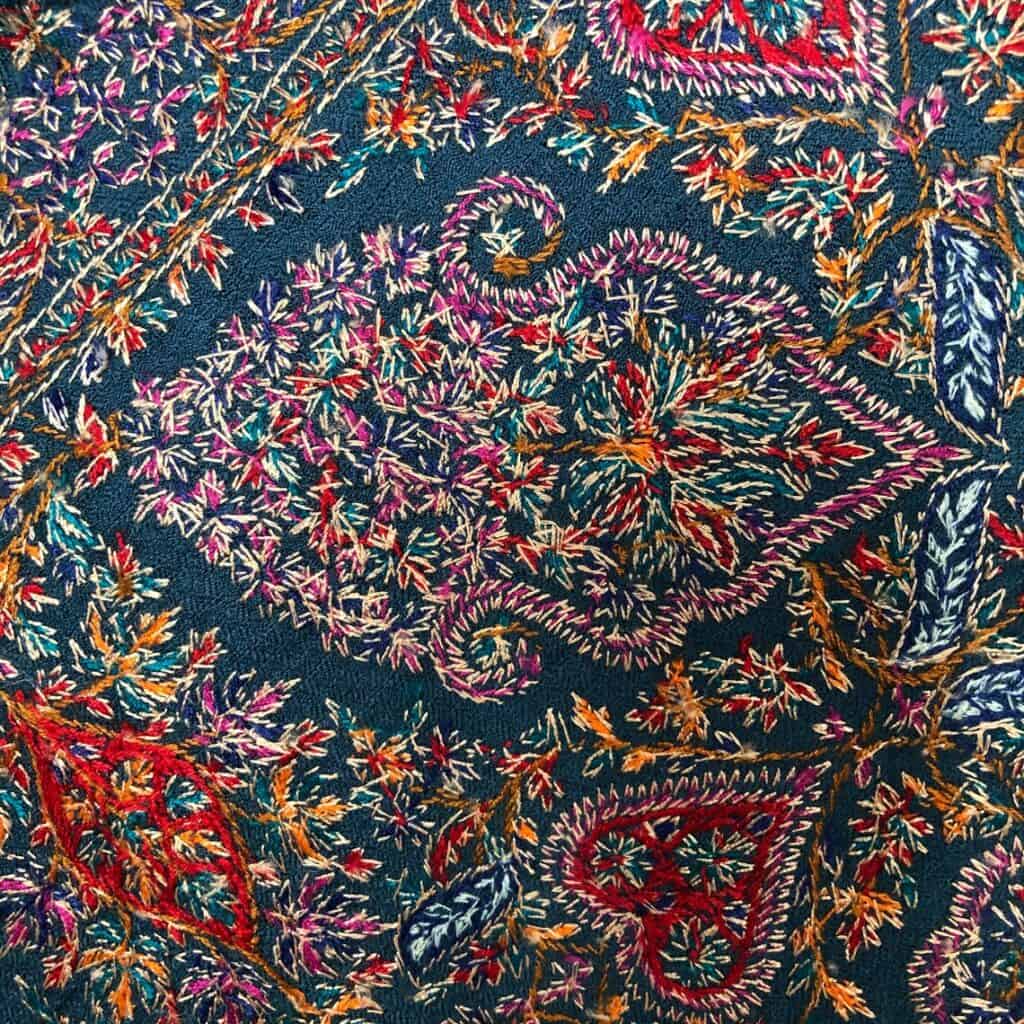
Left to Right:
Kashmir Pashmina Shawl, Sozni Jamawar Embroidery Shawl in Natural White
Silk Sozni Jamawar Embroidery Pashmina Shawl w. Antique Mandala Design
Exclusive Kashmir Silk Sozni Jamawar Embroidery Pashmina Shawl w. Antique Mandala Design
Jamawar shawl prices
Is 30$ to 100,000$ a good answer? Well, this is it.
Today, Jamawar shawls can span from moderately priced pieces to high-end, luxurious items catering to different budgets and preferences.
The prices vary significantly depending on factors such as age, materials, the intricacy of the design, and the craftsmanship involved in creating the piece.
Antique, handwoven, pure silk Jamawar shawls with complex, traditional patterns are usually the most expensive.
Conversely, more affordable options may include machine-made Jamawar shawls, which are often crafted from less strict blends of wool, cotton, and even synthetic threads.
But we can say that even on a lower budget, you can find amazing Jamawar shawls with magnificent designs, which will style up your wardrobe with enchanting chic.
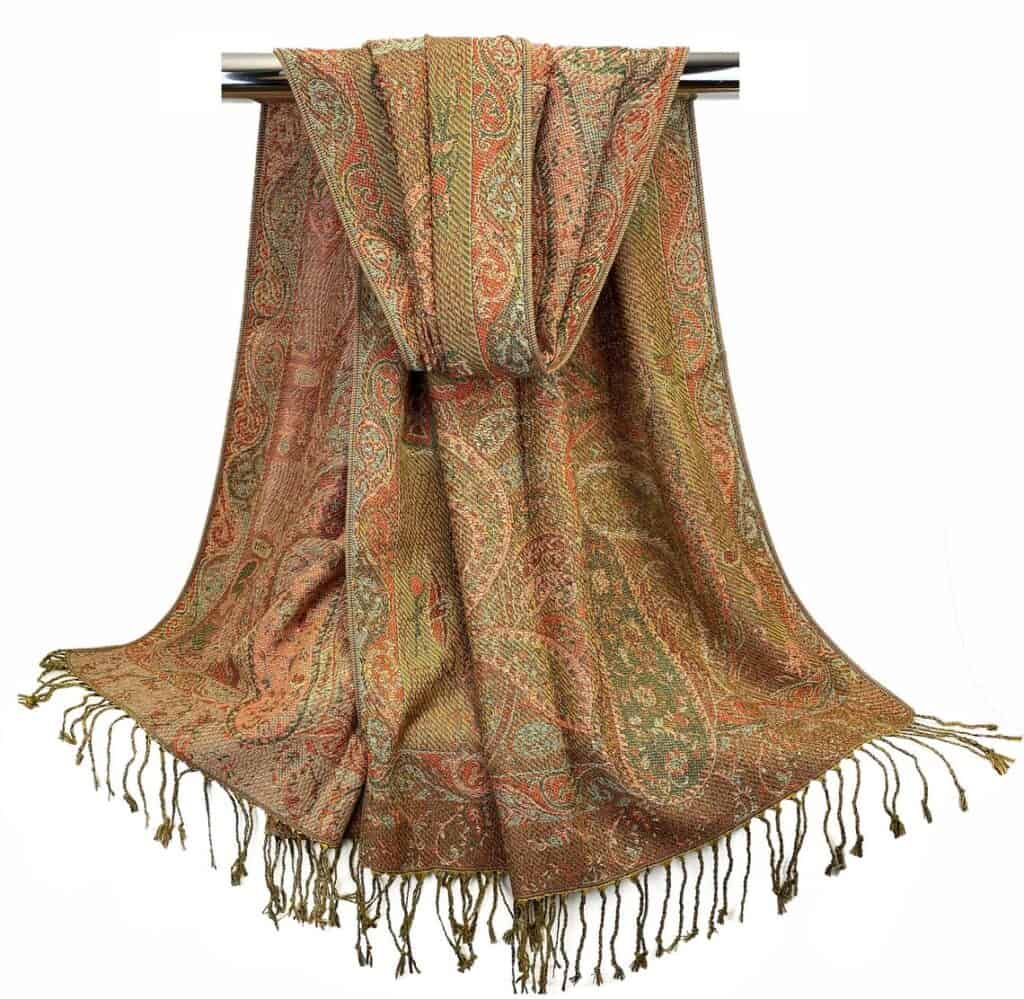
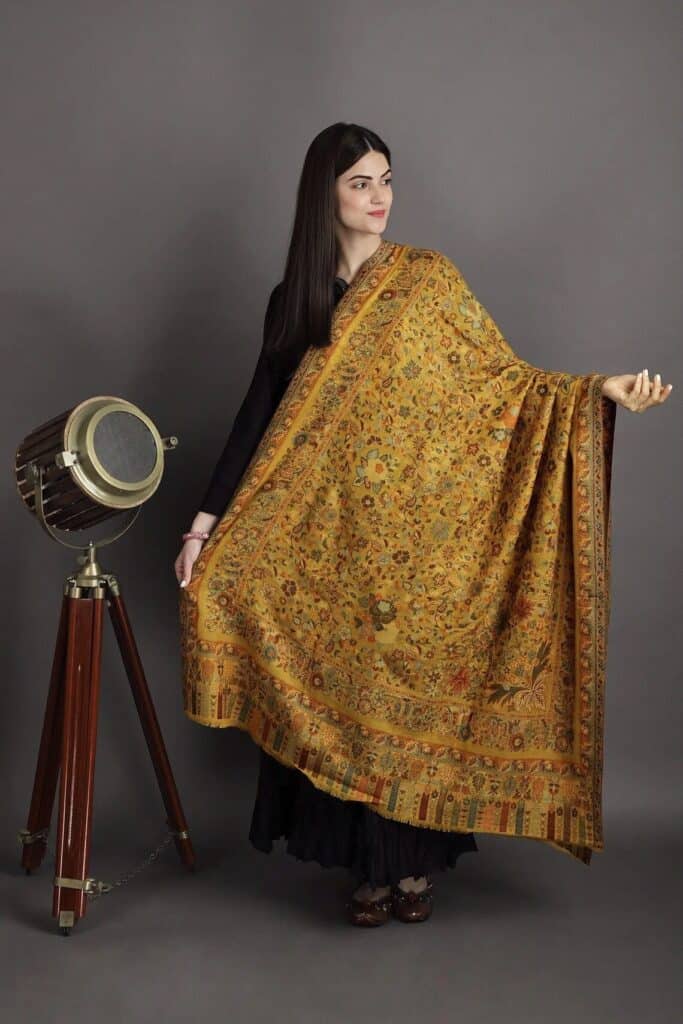
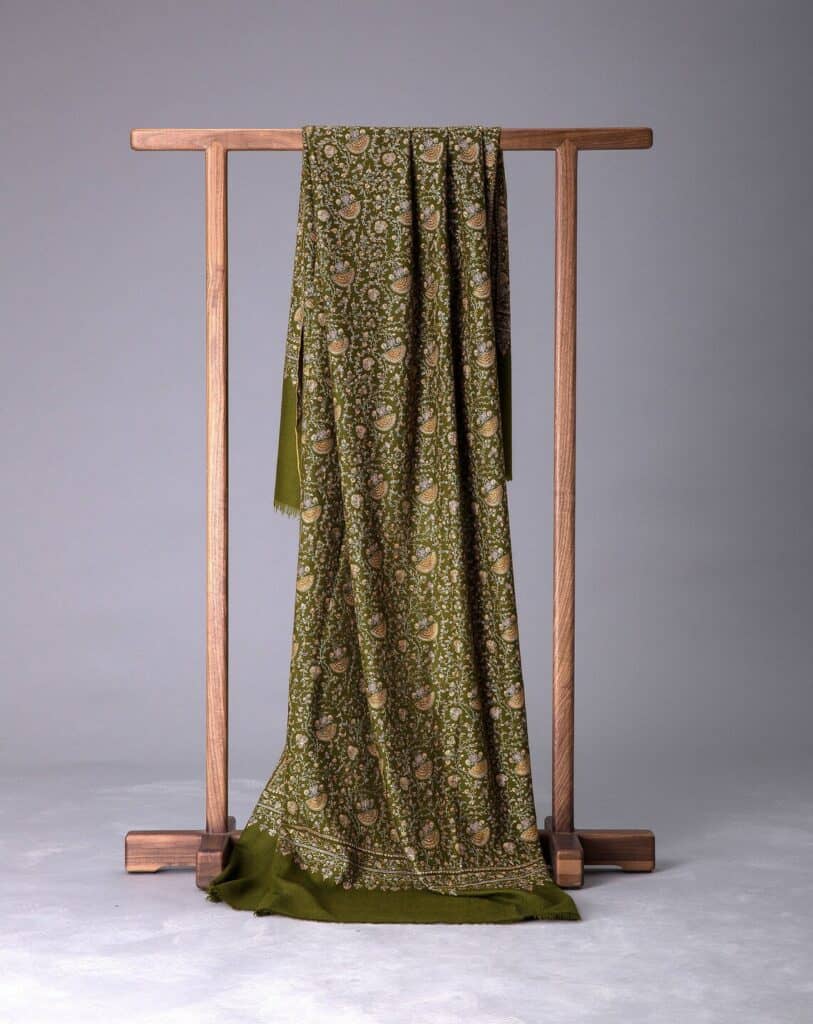
Vintage Style Jamawar Shawl by burlapandjeans (Etsy)
Kani Jamawar Shawl from Amritsar with Multicolor Floral Vines by Gokalarts (Etsy)
Exclusive Emerald Green Pashmina Shawl with Silk Sozni Jamawar Embroidery by BeauxgensCouture (Etsy)
Antique Jamawar shawls
Antique Jamawar shawls are highly prized and sought-after collectible items, reflecting the rich heritage and craftsmanship of the ancient era. They often have heavy embroidery work with a raw finish, revealing the primitive techniques of ancient times.
Antique Jamawar shawls represent one of the finest quality luxurious fabrics during the Mughal reign. They are admired by collectors and enthusiasts for their rarity, artistry, and historical-cultural significance they hold.
Some of the most extraordinary Jamawar shawls are exhibited in the Metropolitan Museum; when you come across these pieces of art, you can better appreciate the weaving skills and the rarity of these items. In this video, you can enjoy feeling and appreciating the quality of these amazing shawls:
Kani Jamawar shawls
Kani Jamawar shawls are Jamawar shawls made with a unique technique. They showcase the exquisite traditional art of Kani weaving, which is a time-honored technique that originated in the Kanihama region of Kashmir, India.
The skilled artisans use small wooden or cane sticks called “Kani” to weave intricate patterns and designs into the fabric. Like all Jamawar shawls, Kani shawls are known for their detailed paisley motifs, vibrant colors, and exceptional craftsmanship.
The rare artisans who are left nowadays can weave a maximum of a few centimeters per day, so it may take 6 to 18 months to complete one shawl!
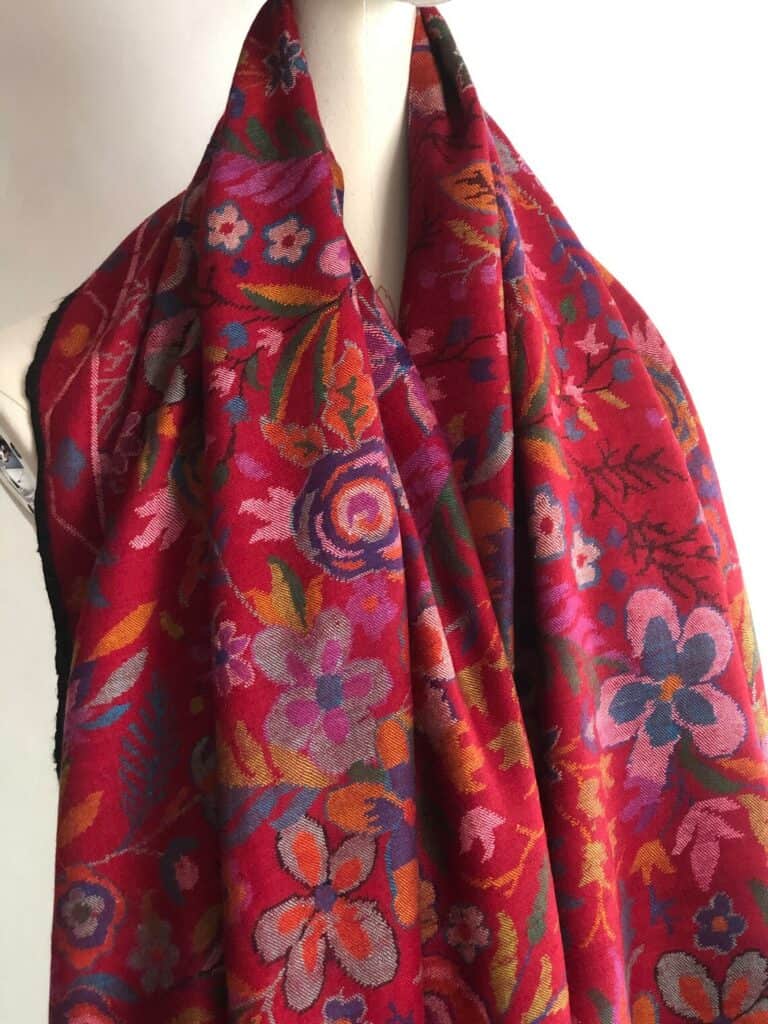
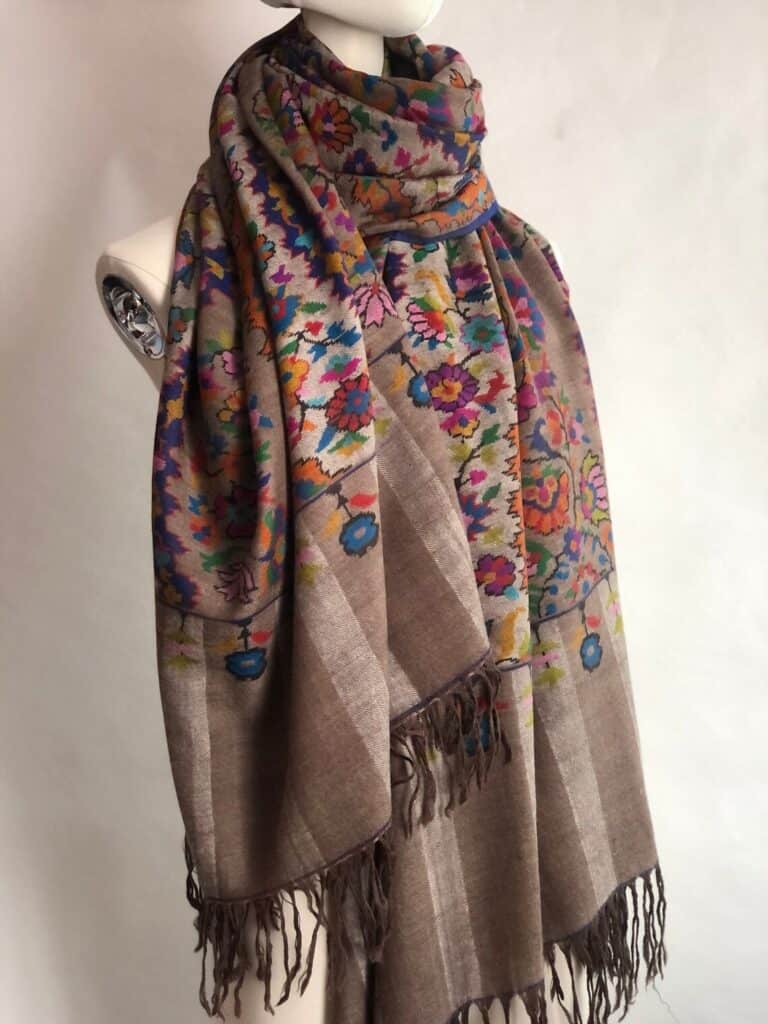
Left to Right:
Kani Jamawar Pashmina Shawl Floral Designs
Gorgeous Dark Camel Kani Jamawar Pashmina Shawl Floral Designs
Silk Jamawar shawls
As weaving developed in India, multiple techniques and design interpretations were created. The well-skilled Indian weavers constantly explored their art using unconventional fabrics to create beautiful Jamawar textiles. In Varanasi, the artists took the Jamawar fabric with all its characteristics and made it purely from silk.
The outcome fabric was, of course, outstanding with its silky sheen and luxurious beauty, making the silk Jamawar the most popular and well-recognized Jamawar fabric of our days.
Zari Jamawar Shawl
Zari Jamawar shawls are an even more luxurious variation of Jamawar shawls, known for the fusion of Zari work, a form of intricate embroidery using metallic threads, usually gold or silver.
The Zari work adds a touch of luxury and grandeur to the already exquisite Jamawar shawls. The combination of Jamawar weaving and Zari embroidery creates a rich and distinctive look, making these shawls highly sought-after (by those who can afford it!) for special occasions and ceremonies.
Last words about the Magnificent Jamawar Shawls
Like all arts, the art of weaving was influenced by many qualities like the artistic level and skills of the weaver, the local tradition, the exposure to other cultures, the expected use of the fabric, who it is for, inspiration, and more, and more.
The Jamawar shawls are stunning works of art and a blend of tradition and elegance, showcasing the remarkable weaving heritage of the regions they originate from.
Lucky for us, today, it is pretty easy to find Jamawar shawls in so many qualities, designs, techniques, and ages.
Having a piece of the Jamawar art in your wardrobe will give you the confidence that when you need an effortless style up, you will know exactly what to do!
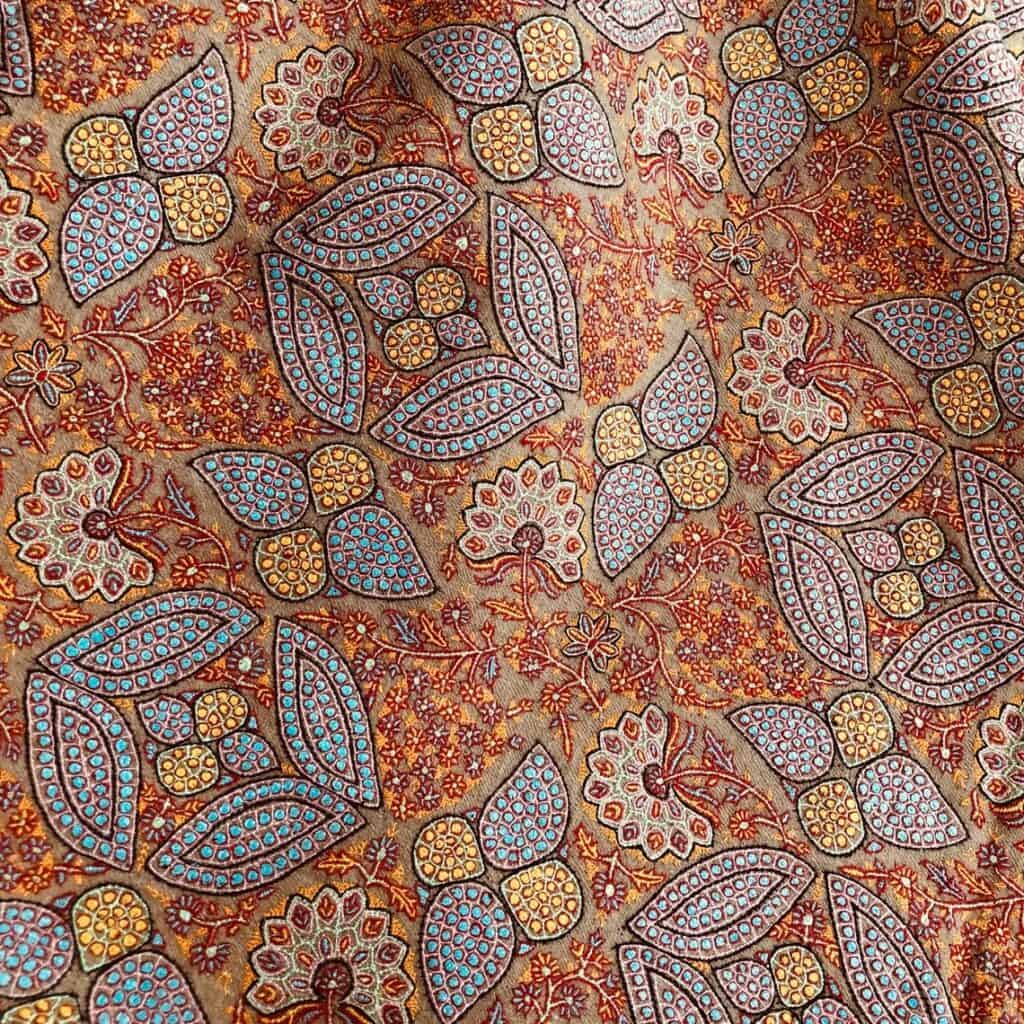
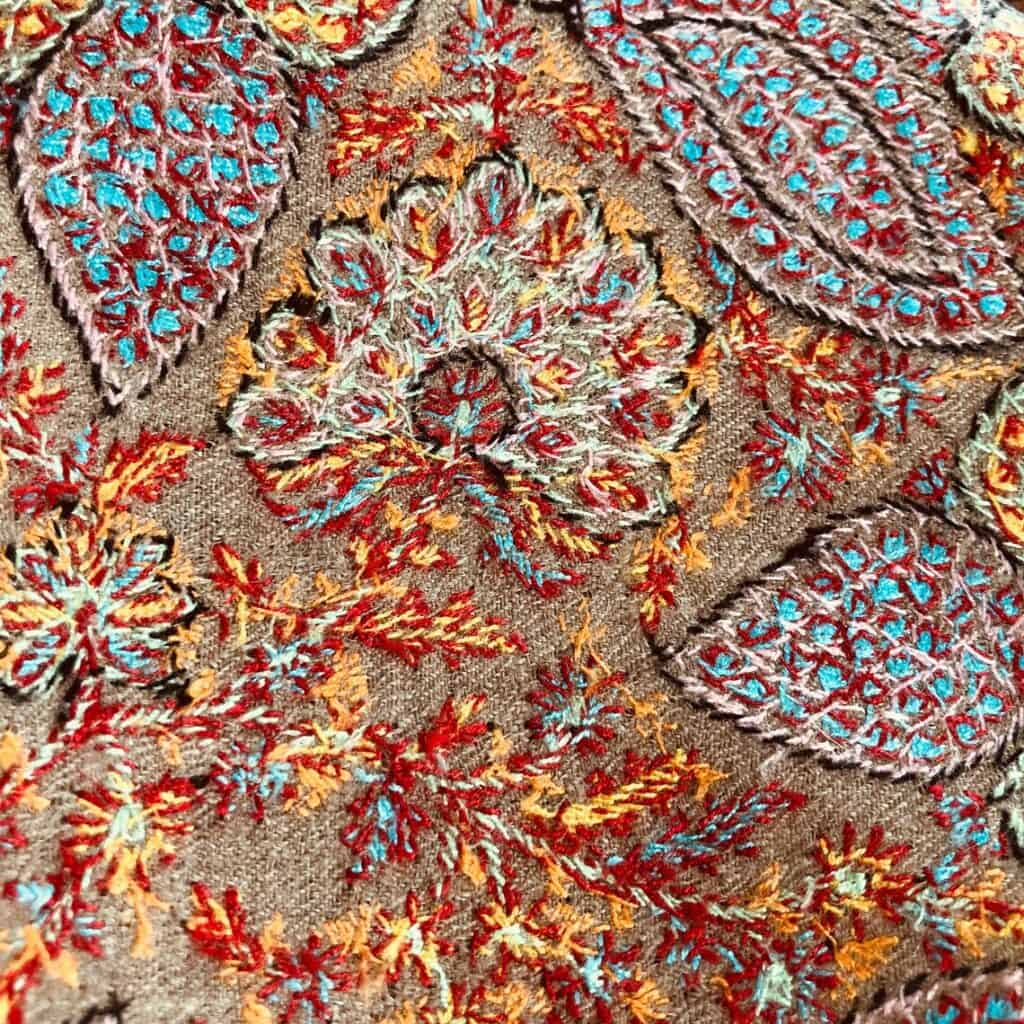
References & Inspiration:
- https://www.utsavpedia.com/textiles/jamawar/
- https://www.exoticindiaart.com/blog/the-glory-of-jamawars-of-kashmir/
- https://www.holyweaves.com/collections/weave-jamawar-tanchoi-a
- https://www.slideshare.net/VisualDesignSolution/jamawar-shawl
- https://www.metmuseum.org/art/collection/search/157152
- https://en.wikipedia.org/wiki/Kani_Shawl
- https://www.utsavfashion.com/blog/fabrics/jamavar-fabric

